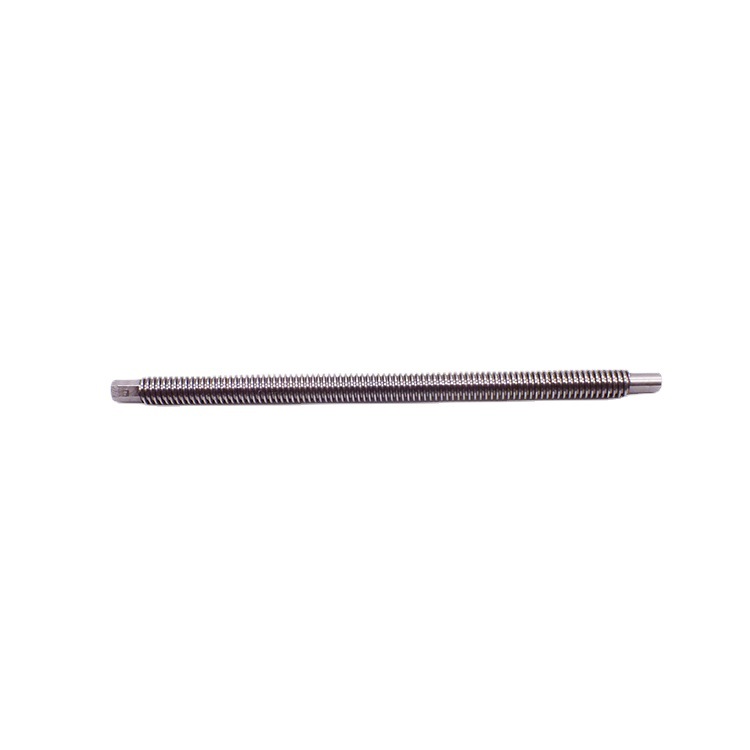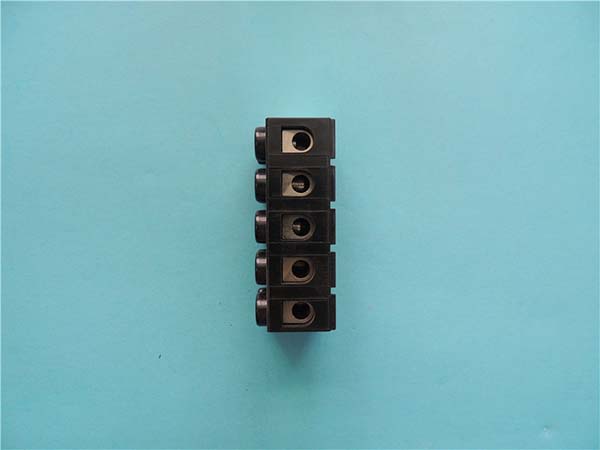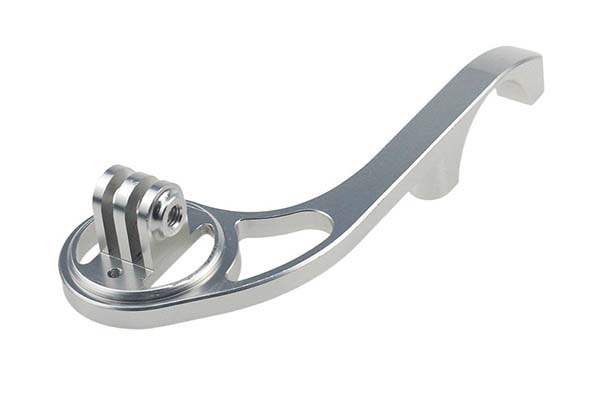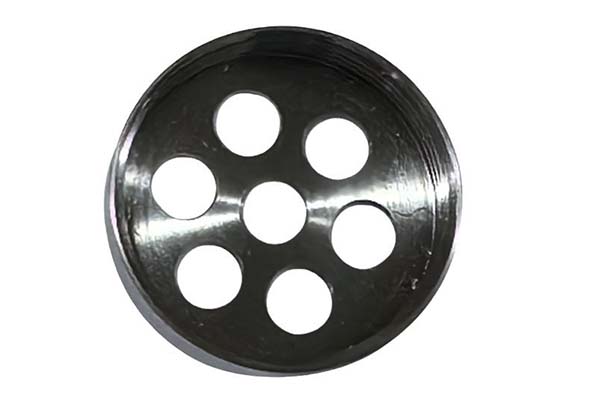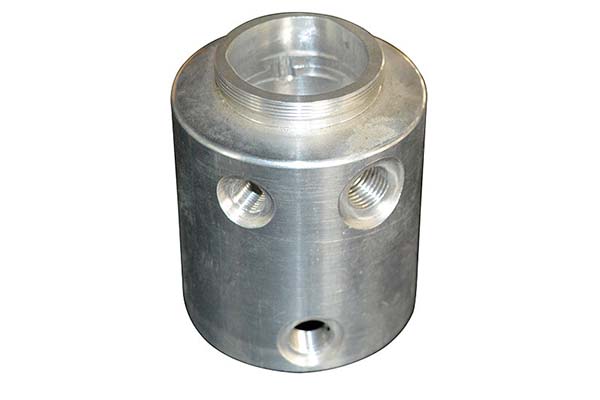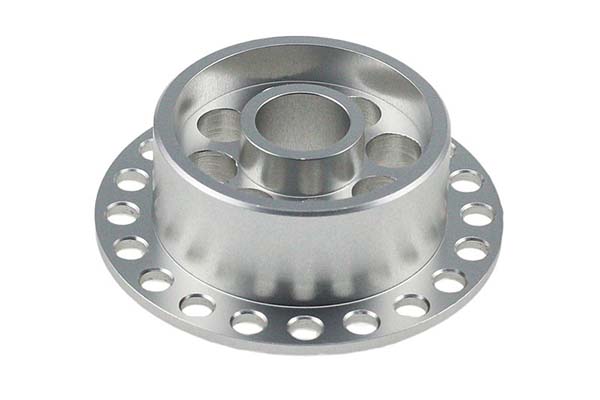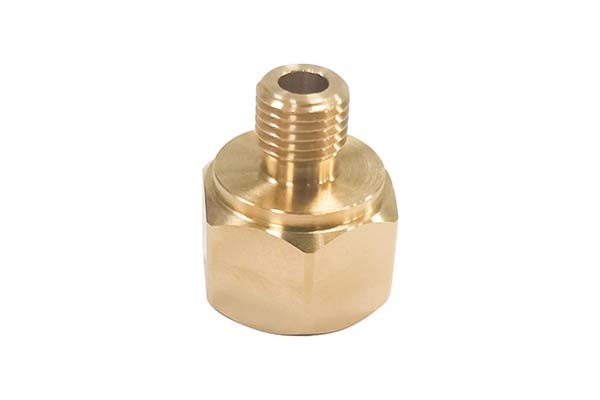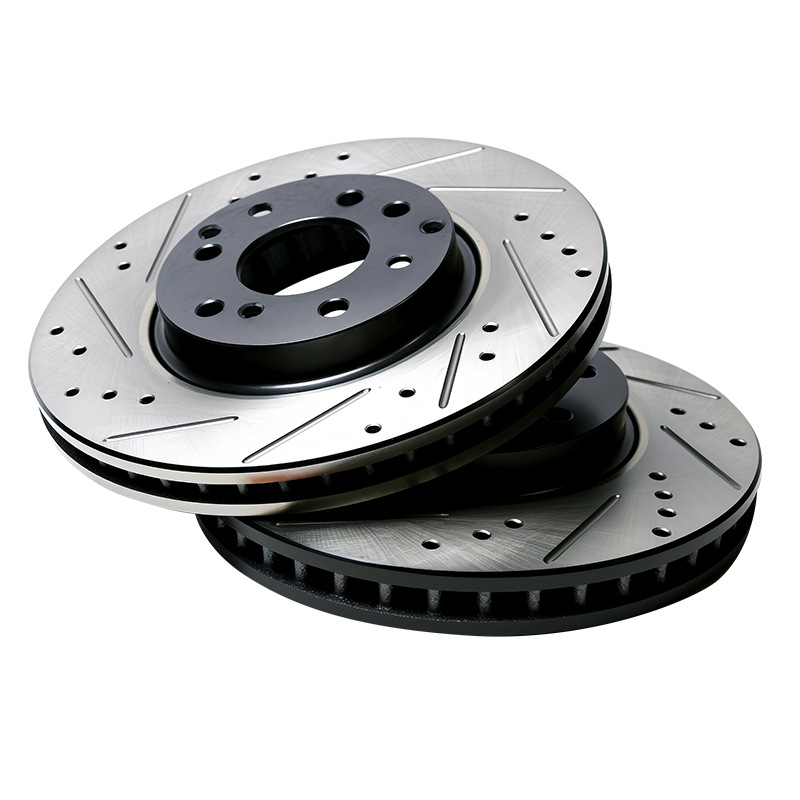CNC Aerospace Parts: An Overview
Definition and Basics
CNC, which stands for Computer Numerical Control, is at the heart of modern manufacturing, especially when it comes to aerospace parts. CNC aerospace parts are components produced through a highly precise manufacturing process. This process begins with a CAD (Computer - Aided Design) model, which is a digital representation of the part. Engineers use specialized software to create this model, carefully designing every detail of the part, from its overall shape to the tiniest feature.
Once the CAD model is complete, it is translated into a CNC program. This program contains a set of instructions that tell the CNC machine how to move the cutting tools and manipulate the raw material. The CNC machine, which can be a milling machine, lathe, or other types of equipment, then follows these instructions with extreme precision.
The manufacturing process of CNC aerospace parts typically involves operations such as milling, turning, drilling, and grinding. Milling is used to remove material from the workpiece to create flat surfaces, slots, and complex 3D shapes. Turning is mainly for creating cylindrical parts, like shafts. Drilling is used to create holes, and grinding is for achieving a high - surface finish and tight tolerances.
One of the most remarkable features of CNC aerospace parts is their precision. These parts can be manufactured with tolerances as tight as ±0.001 inches or even smaller in some cases. For Yigu Technology example, in the production of turbine blades for aircraft engines, the precision of the blades' shape directly impacts the engine's efficiency and performance. A deviation of just a fraction of a millimeter can lead to reduced thrust, increased fuel consumption, or even engine failure.
Another key characteristic is the ability to produce complex geometries. Aerospace components often have intricate shapes that are difficult or impossible to create using traditional manufacturing methods. CNC machines, with their multi - axis capabilities (some can have up to 5 or more axes), can move the cutting tool in multiple directions simultaneously. This allows for the creation of parts with curved surfaces, internal cavities, and other complex features.
Applications in Aerospace
- Aircraft Structure
- Fuselage Components: The fuselage is the main body of an aircraft. CNC - machined parts such as the frames, bulkheads, and skin panels are crucial for its structural integrity. These parts are made from materials like aluminum alloys, titanium alloys, and composite materials. For instance, the frames are designed to support the weight of the aircraft and withstand the aerodynamic forces during flight. CNC machining ensures that they are precisely shaped to fit together perfectly, reducing the need for excessive material and thus contributing to weight reduction. A study showed that by using CNC - machined aluminum alloy frames in a commercial airliner, the weight of the fuselage was reduced by 15%, leading to a 10% increase in fuel efficiency.
- Wing Components: Wings are responsible for generating lift. CNC - manufactured wing spars, ribs, and leading - edge components play a vital role. Wing spars are like the backbone of the wing, and their strength and precision are essential. Ribs help maintain the shape of the wing. With CNC machining, these parts can be produced with complex curvatures that optimize the wing's aerodynamic performance. In a military fighter jet, the use of CNC - machined composite wing ribs improved the aircraft's maneuverability by 20% due to better - controlled air - flow over the wing.
- Aircraft Engines
- Turbine Blades: Turbine blades are some of the most critical components in an aircraft engine. They operate in extremely high - temperature and high - stress environments. CNC machining is used to create blades with precise airfoil shapes that maximize the engine's efficiency. These blades are often made from nickel - based superalloys, which are difficult to machine. However, CNC technology allows for the production of blades with tight tolerances. For Yigu Technology example, a high - bypass turbofan engine's turbine blades, when produced with CNC, can increase the engine's thrust - to - weight ratio by 15%, making the aircraft more fuel - efficient and powerful.
- Compressor Components: Compressor parts, such as compressor disks and blades, are also produced using CNC. The compressor is responsible for compressing the incoming air before it enters the combustion chamber. CNC - machined compressor components ensure that the air is compressed efficiently, which is crucial for the engine's overall performance. In a modern airliner engine, the use of CNC - machined compressor disks and blades has reduced engine - out emissions by 8% by improving combustion efficiency.
- Spacecraft
- Satellite Components: In satellites, CNC - made parts are used in various subsystems. For example, the structural components like the satellite's body frame are CNC - machined from lightweight yet strong materials such as titanium alloys. These frames need to withstand the vibrations during launch and the harsh space environment. CNC - produced electronic enclosures protect the sensitive satellite electronics from radiation and temperature variations. A study on a communication satellite showed that the use of CNC - machined titanium alloy frames increased the satellite's lifespan by 20% due to their superior durability.
- Rocket Components: Rockets rely on CNC - manufactured parts for their propulsion systems, guidance systems, and structural elements. Engine nozzles, which are critical for thrust generation, are precision - machined using CNC. The shape of the nozzle affects the rocket's thrust efficiency. CNC - made guidance system components, such as gyroscopes and accelerometers' housings, ensure accurate navigation. In a recent space launch, a rocket with CNC - machined engine nozzles achieved a 12% increase in payload capacity due to improved thrust efficiency.
CNC Aerospace Parts Manufacturing Process
Design and Programming
Design and programming are the cornerstone of manufacturing high - quality CNC aerospace parts. Engineers start with advanced CAD software, such as CATIA, SolidWorks, or Siemens NX. These software programs allow for the creation of highly detailed 3D models of the aerospace parts. For Yigu Technology example, when designing a turbine engine blade, the CAD model will precisely define the blade's airfoil shape, its internal cooling channels, and any surface features.
Once the design is complete, the next step is programming. CAM (Computer - Aided Manufacturing) software, like Mastercam or HyperMill, is used to generate the CNC programs. These programs translate the design into a set of instructions, known as G - codes and M - codes. G - codes control the movement of the machine's axes, such as linear and rotational movements, while M - codes manage functions like spindle on/off, coolant on/off, and tool changes. The programming process also takes into account factors like the type of material to be machined, the cutting tools available, and the desired surface finish. For instance, if the part is made of a high - strength titanium alloy, the programmer will adjust the cutting speeds and feeds to prevent tool wear and ensure accurate machining.
Machining Operations
- Milling
Milling is a widely used operation in CNC aerospace part manufacturing. There are different types of milling, including face milling, end milling, and contour milling. In face milling, a flat surface is created by using a milling cutter with multiple teeth. For Yigu Technology example, when machining the surface of an aircraft wing spar, face milling can quickly remove large amounts of material to achieve the desired flatness. End milling is used for creating slots, pockets, and more complex 3D shapes. It can be used to machine the internal cavities of engine components. Contour milling follows the outline of a part, allowing for the creation of complex profiles, such as the outer shape of a fuselage frame.
- Drilling
Drilling is essential for creating holes in aerospace parts. These holes can be used for fastener installation, fluid passage, or other purposes. CNC drilling machines can achieve high - precision hole placement. For example, in the production of a satellite's structural components, holes need to be drilled with extreme accuracy so that different parts can be assembled correctly. Specialized drill bits are used depending on the material being drilled. For aluminum alloys, high - speed steel drill bits are often sufficient, while for harder materials like titanium, carbide - tipped drill bits are required.
- Turning
Turning is used to create cylindrical parts. In the aerospace industry, parts such as shafts, bolts, and some engine components are produced through turning operations. A lathe is the main machine used for turning. The workpiece is rotated on the lathe, and a cutting tool is fed into the workpiece to remove material and shape it. For example, the shafts that connect different components in an aircraft engine are turned to precise diameters and surface finishes to ensure smooth operation and proper fit.
- Grinding
Grinding is used to achieve a high - surface finish and tight tolerances. After other machining operations, grinding can be used to remove any remaining material imperfections and to further refine the part's dimensions. For example, turbine blades, which require extremely smooth surfaces for efficient operation, are often ground to a mirror - like finish. There are different types of grinding, including surface grinding, cylindrical grinding, and internal grinding, each suitable for different part geometries.
Quality Control and Inspection
Quality control is of utmost importance in the manufacturing of CNC aerospace parts. Even the slightest defect in an aerospace part can lead to catastrophic consequences. One of the primary inspection tools used is the Coordinate Measuring Machine (CMM). A CMM can precisely measure the dimensions of a part by touching its surface with a probe. It can detect any deviations from the design specifications, such as out - of - tolerance holes, incorrect surface profiles, or misaligned features. For example, when inspecting a machined aircraft engine compressor disk, the CMM can measure the diameter of the disk, the position of the blade attachment points, and the flatness of the disk's surfaces with high accuracy.
Laser scanning is another advanced inspection method. A laser scanner projects a laser beam onto the part's surface and measures the reflected light to create a 3D model of the part. This model can then be compared to the original CAD design. Laser scanning is particularly useful for inspecting complex - shaped parts, as it can quickly capture the entire surface of the part. For instance, when inspecting a satellite antenna with its intricate curved surfaces, laser scanning can provide a detailed analysis of any surface irregularities.
In addition to these, non - destructive testing (NDT) methods are also used. Methods like ultrasonic testing can detect internal defects, such as cracks or voids, in parts without damaging them. Eddy current testing is used to detect surface - breaking defects in conductive materials, which is crucial for aerospace parts made of metals like aluminum and titanium.
Case Studies
Success Stories of CNC in Aerospace
- Airbus A350 XWB
- In the manufacturing of the Airbus A350 XWB, CNC - machined parts played a crucial role. The aircraft's wing box, which is a complex and large - scale component, was produced using CNC technology. By using advanced 5 - axis CNC milling machines, Airbus was able to achieve a high level of precision in the manufacturing of the wing box's internal and external structures. The use of CNC reduced the number of parts in the wing box assembly by 50% compared to previous aircraft models. This not only simplified the assembly process but also improved the structural integrity of the wing. Additionally, the weight of the wing box was reduced by 20%, leading to a significant improvement in fuel efficiency. For Yigu Technology example, the complex rib structures within the wing box, which were previously made from multiple smaller parts and assembled, could now be machined as single, integral components using CNC, eliminating the need for numerous fasteners and reducing potential points of failure.
- SpaceX Falcon 9 Rocket
- SpaceX's Falcon 9 rocket also benefited greatly from CNC - manufactured parts. The rocket's engine nozzles, which are made from high - strength materials like Inconel, were precision - machined using CNC technology. The complex shape of the engine nozzles, with their contoured surfaces designed to optimize thrust, was achieved with extreme accuracy. By using CNC, SpaceX was able to improve the thrust efficiency of the Falcon 9 rocket by 10%. In addition, the manufacturing time for the engine nozzles was reduced by 35% compared to traditional manufacturing methods. This reduction in manufacturing time was crucial for SpaceX's ambitious launch schedules. For instance, the internal cooling channels within the nozzles, which are critical for preventing overheating during the rocket's launch, were drilled and shaped with high precision using CNC, ensuring the engine's reliability even under the most extreme conditions.
- Boeing 787 Dreamliner
- The Boeing 787 Dreamliner utilized CNC - machined parts throughout its design. The fuselage panels of the 787 were made from advanced composite materials and precision - cut using CNC technology. The use of CNC in the production of these panels allowed for a more consistent quality and a reduction in the number of defects. In fact, the defect rate in the fuselage panel production was reduced from 5% in previous models to 1% in the 787. This improvement in quality led to a decrease in rework and repair costs. Moreover, the use of CNC - machined composite fuselage panels contributed to a 20% weight reduction in the overall fuselage structure, which in turn improved the aircraft's fuel efficiency and range. For example, the complex curvature of the fuselage panels, which was designed to optimize aerodynamics, was accurately replicated using CNC, ensuring a smooth air - flow over the aircraft's surface.
FAQs
What Are the Main Materials Used in CNC Aerospace Parts?
Common materials used in CNC aerospace parts include aluminum alloys, titanium alloys, nickel - based superalloys, and composite materials. Aluminum alloys, such as 7075 and 6061, are popular due to their high strength - to - weight ratio. They are lightweight, which is crucial for reducing the overall weight of an aircraft, while still providing sufficient strength to withstand the mechanical stresses during flight. For Yigu Technology example, in the construction of aircraft wings, aluminum alloys are often used to form the outer skin and internal structural components.
Titanium alloys, like Ti - 6Al - 4V, are known for their excellent strength, high - temperature resistance, and corrosion resistance. They can maintain their mechanical properties even in extreme environments, such as the high - temperature regions of aircraft engines. In the production of engine components like compressor blades and turbine disks, titanium alloys are preferred.
Nickel - based superalloys are used in parts that operate under extremely high temperatures and mechanical loads, such as the hot - section components of aircraft engines. These alloys can withstand temperatures up to 1000°C or more, ensuring the engine's reliable operation.
Composite materials, such as carbon - fiber - reinforced polymers (CFRPs), offer a combination of high strength, low weight, and good fatigue resistance. They are used in various aerospace applications, including the fuselage, wings, and interior components. For instance, in the Boeing 787 Dreamliner, a significant portion of the structure is made of CFRPs, which has led to weight savings and improved fuel efficiency.
How Does CNC Ensure the High Precision of Aerospace Parts?
CNC ensures high precision in aerospace parts through several mechanisms. First, the CNC machine is equipped with high - accuracy servo - motors and encoders. Servo - motors can precisely control the movement of the machine axes, and encoders provide real - time feedback on the position of the axes. This closed - loop control system allows for extremely accurate positioning, with some CNC machines capable of achieving positioning accuracies of ±0.001 mm or even better.
Second, the CNC programming process is highly detailed. Engineers use advanced CAM software to generate the CNC programs. They carefully define the tool paths, cutting speeds, and feed rates. For example, when machining a complex - shaped aerospace part, the programmer will optimize the tool path to ensure that the cutting tool moves smoothly and precisely, minimizing any deviations from the design specifications.
Moreover, CNC machines are often equipped with advanced cooling and lubrication systems. These systems help to maintain a stable temperature during the machining process, reducing thermal expansion and contraction of the workpiece and the machine components. This is crucial for maintaining the accuracy of the machined parts, especially when working with materials that are sensitive to temperature changes.

